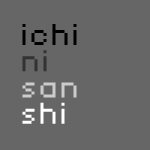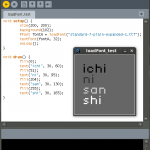Have you ever wanted to add a Save as…
button to a webapp? Whether you’re making an advanced WebGL-powered CAD webapp and want to save 3D object files or you just want to save plain text files in a simple Markdown text editor, saving files in the browser has always been a tricky business.
Usually when you want to save a file generated with JavaScript, you have to send the data to your server and then return the data right back with a Content-disposition: attachment header. This is less than ideal for webapps that need to work offline. The W3C File API includes a FileSaver interface, which makes saving generated data as easy as saveAs(data, filename), though unfortunately it will eventually be removed from the spec.
I have written a JavaScript library called FileSaver.js, which implements FileSaver in all modern browsers. Now that it’s possible to generate any type of file you want right in the browser, document editors can have an instant save button that doesn’t rely on an online connection. When paired with the standard HTML5 canvas.toBlob() method, FileSaver.js lets you save canvases instantly and give them filenames, which is very useful for HTML5 image editing webapps. For browsers that don’t yet support canvas.toBlob(), Devin Samarin and I wrote canvas-toBlob.js. Saving a canvas is as simple as running the following code:
canvas.toBlob(function(blob) { saveAs(blob, filename); }); |
I have created a demo of FileSaver.js in action that demonstrates saving a canvas doodle, plain text, and rich text. Please note that saving with custom filenames is only supported in browsers that either natively support FileSaver or browsers like Google Chrome 14 dev and Google Chrome Canary, that support <a>.download or web filesystems via LocalFileSystem.
How to construct files for saving
First off, you want to instantiate a Blob. The Blob API isn’t supported in all current browsers, so I made Blob.js which implements it. The following example illustrates how to save an XHTML document with saveAs().
saveAs( new Blob( [(new XMLSerializer).serializeToString(document)] , {type: "application/xhtml+xml;charset=" + document.characterSet} ) , "document.xhtml" ); |
Not saving textual data? You can save multiple binary Blobs and ArrayBuffers to a Blob as well! The following is an example of setting generating some binary data and saving it.
var buffer = new ArrayBuffer(8) // allocates 8 bytes , data = new DataView(buffer) ; // You can write uint8/16/32s and float32/64s to dataviews data.setUint8 (0, 0x01); data.setUint16(1, 0x2345); data.setUint32(3, 0x6789ABCD); data.setUint8 (7, 0xEF); saveAs(new Blob([buffer], {type: "example/binary"}), "data.dat"); // The contents of data.dat are <01 23 45 67 89 AB CD EF> |
If you’re generating large files, you can implement an abort button that aborts the FileSaver.
var filesaver = saveAs(blob, "video.webm"); abort_button.addEventListener("click", function() { filesaver.abort(); }, false); |

